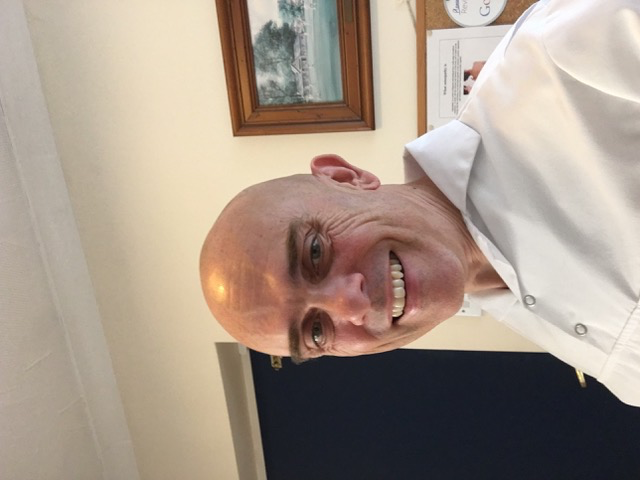Professionalism and Safety
To qualify, an osteopath must study for four to five years for an undergraduate degree. This is similar to a medical degree, with more emphasis on anatomy and musculoskeletal medicine and includes more than 1,000 hours of training in osteopathic techniques. By law, osteopaths must register with the General Osteopathic Council (GOsC). It is an offence for anyone to call themselves an osteopath if they are not registered with the GOsC. The British Medical Association’s guidance for general practitioners states that doctors can safely refer patients to osteopaths.
What we do
Osteopathy is a system of diagnosis and treatment for a wide range of medical conditions. It works with the structure and function of the body, and is based on the principle that the well-being of an individual depends on the skeleton, muscles, ligaments and connective tissues functioning smoothly together.
Osteopathic treatment does not only target the symptoms but also treats other parts of the body that may have caused the symptoms. Osteopaths have a holistic approach and believe that your whole body will work well if your body is in good structural balance. Imagine, for example, a car that has one of its front wheels not quite pointing straight. It may run well for a while, but after a few thousand miles, the tyre will wear out. You can apply this example to the human body, which is why it is so important to keep the body in good balance. We use a wide range of techniques, including massage and joint mobilization which allows us to focus on every patient’s precise needs.
Osteopaths assess and treat a wide range of people from elite sportsmen and women through to the elderly.
How we do it
Your medical history:
Before we start to treat you at the Bexleyheath Osteopathic Practice, we will make a full medical assessment. We take time to listen to you and ask questions to make sure we understand your medical history and your day-to-day routine. We’ll ask you about things like diet, exercise and what is happening in your life, as these may give clues to help our diagnosis.
We may feel your pulse and check your reflexes. We may also take your blood pressure and refer you for clinical tests, such as MRI scans, x-rays or blood tests, if we think you need them.
Your posture:
Your osteopath will look at your posture and how you move your body. We may also assess what happens when we move it for you and see what hurts, where and when.
Trouble areas:
Using touch, we may also find the areas which are sensitive or tight and this helps us to identify what’s going on.
When we have done this, we can diagnose your condition. We may sometimes feel that osteopathy is not appropriate for you and refer you to your GP or another specialist such as an orthopaedic surgeon.
Your treatment:
Our osteopaths use a wide range of gentle manipulations, depending on your age, fitness and diagnosis.
Treatment is different for every patient but may include techniques such as different types of soft tissue massage or joint manipulations to release tension.
Sometimes, when we move joints you may hear a "click". This is just like the “click" people get when they crack their knuckles. Consent is always obtained and the osteopathic approach to be taken will always be agreed with the patient.
Your osteopath may discuss exercises that you can do to improve your posture and movement, and give advice regarding your workstation and everyday life.

People consult the Bexleyheath Osteopathic Practice with a wide range of conditions.
Here are some organized into regions of the body:
Lower (Lumbar) Spine
Muscle strain/spasms
Joint pain
Sacroiliac joint dysfunction
Piriformis Syndrome - Pain in the buttock
Arthritis of Vertebral Facets
Spondylosis (Disc Degeneration)
Sciatica (Disc Prolapse, Disc Herniation, “Slipped Discs")
Trapped nerves
Upper (Thoracic) Spine
Muscle strain/tension
Arthritis or Spondylosis (Disc Degeneration)
Joint pain
Costovertebral Joint Pain (Rib pain)
Intercostal muscles strains
Neck (Cervical) Spine
Muscle strain
Joint pain
Arthritis
Spondylosis (Disc Degeneration)
Cervical Disc Herniation (Trapped nerves)
Scalene Syndrome (Tingling down the arm)
Temporomandibular Joint (TMJ) Dysfunction (Jaw pain)
Trapped nerves
Tension headaches
Shoulder
Rotator Cuff injuries
Adhesive Capsulitis (Frozen Shoulder)
Impingement Syndrome
Instability Syndrome of the Glenohumeral Joint
Bicipital Tendonitis
Acromioclavicular Joint Sprain
Thoracic Outlet Syndrome (tingling in the arms)
Hip
Tendonitis or strain of hip muscles
Bursitis
Hip Capsulitis
Arthritis of the hip
Snapping hip syndrome
Nerve entrapment syndromes (Pain down the leg)
Knee
Ligament sprains
Arthritis
Muscle strains / tendonitis
Bursitis
Patellar Tracking dysfunction
Minor meniscus injuries (Cartilage tears/damage)
Leg, Ankle, Foot
Muscle strains
Achilles tendonitis
Ankle sprain (“Twisted" Ankles)
Plantar fasciitis / Heel spurs
Shin Splints
Nerve entrapment syndromes
Bunions
Arm, Wrist, Hand
Tennis elbow (lateral epicondylitis)
Golfer's elbow (medial epicondylitis)
Nerve entrapment (Carpal tunnel syndrome, cubital tunnel etc.)
Wrist sprains
Osteoarthritis
Muscle strains/ tendonitis
If you are interested in booking an appointment please call the Bexleyheath Osteopathic Practice on 020 8298 7122.
Our osteopaths look forward to welcoming you soon!!